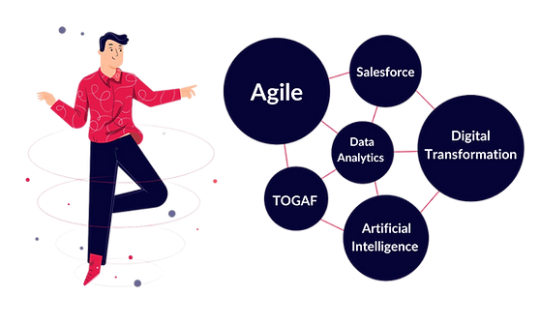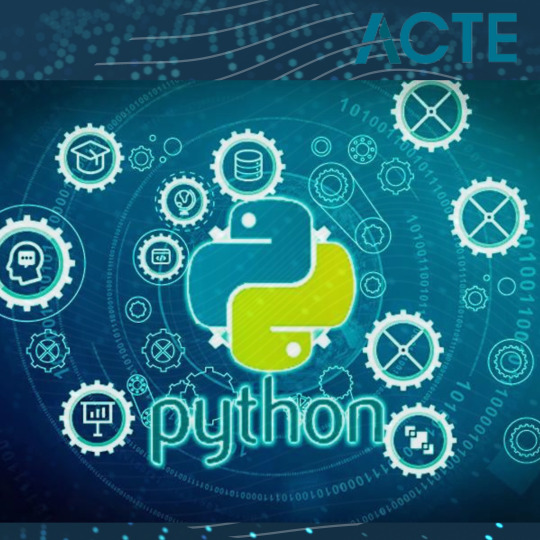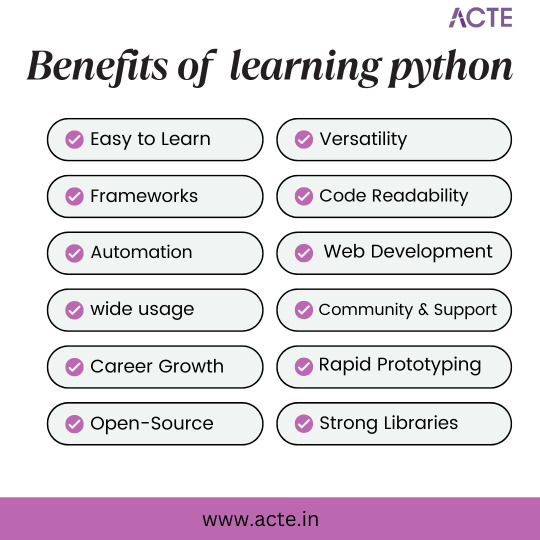#agile developer certification
Explore tagged Tumblr posts
Text
Empower Your Software Development Career with Agile Scrum Training and Certification
In today's fast-paced digital landscape, staying competitive and relevant in the software development industry requires continuous learning and skill enhancement. Agile methodologies have gained significant prominence for their efficiency in project management, and Scrum is at the forefront of these practices. If you're looking to bolster your Agile skills and further your career in software development, Agile Scrum online training is the ideal solution. These training programs offer a flexible and accessible way to acquire in-depth knowledge of Scrum principles, making it easier for professionals to adapt to the evolving demands of the industry.

One of the key benefits of Agile Scrum online training is the opportunity to earn an Agile developer certification. This certification validates your expertise in Agile practices and demonstrates your commitment to delivering high-quality software solutions in an Agile environment. An Agile developer certification not only enhances your professional credibility but also opens doors to a wider range of job opportunities, as many organisations prioritise certified professionals in their hiring processes. With the practical skills and theoretical knowledge gained through Agile Scrum online training, you'll be well-prepared to tackle real-world challenges and drive success in your software development projects.
Investing in Agile Scrum online training and securing an Agile developer certification isn't just about career advancement; it's about staying at the forefront of an ever-evolving industry. The ability to adapt to change, foster collaboration, and deliver quality software efficiently is crucial in today's competitive market. By enrolling in Agile Scrum training, you'll not only learn the methodologies and best practices but also gain a profound understanding of the Agile mindset, equipping you with the tools to excel as a software developer in the digital age.
#agile scrum online training#agile developer certification#agile scrum master certification#scrum master certification#h2kinfosys#online classes#training videos
0 notes
Text
🚀 Start 2025 by advancing your career with Advised Skills!
Explore our upcoming certified training courses designed to boost your skills and help you achieve your professional goals. 🌟 Join our live, instructor-led sessions and get certified by global leaders!

📅 Upcoming Courses: ✔️ 25 January: Leading SAFe® 🔗 https://www.advisedskills.com/agile-and-scrum/leading-safe ✔️ 27 January: ArchiMate® 🔗 https://www.advisedskills.com/enterprise-architecture/archimate-3-foundation-and-practitioner-level-1-and-level-2 ✔️ 27 January: CAPM® 🔗 https://www.advisedskills.com/project-management/certified-associate-in-project-management-capm ✔️ 3 February: TOGAF® EA 🔗 https://www.advisedskills.com/enterprise-architecture/togaf-ea-foundation-and-practitioner-level-1-and-2 ✔️ 3 February: Leading SAFe® 🔗 https://www.advisedskills.com/agile-and-scrum/leading-safe ✔️ 3 February: PMI-PMP® 🔗 https://www.advisedskills.com/project-management/pmi-authorized-pmp-exam-preparation ✔️ 3 February: Change Management Foundation 🔗 https://www.advisedskills.com/business-skills/change-management-foundation ✔️ 6 February: Change Management Practitioner 🔗 https://www.advisedskills.com/business-skills/change-management-practitioner ✔️ 13 February: SAFe® Lean Portfolio Management 🔗 https://www.advisedskills.com/agile-and-scrum/lean-portfolio-management
💡 Whether you're in Enterprise Architecture, Agile Practices, Project Management, or organizational change, we’ve got a course for you!
📢 Seats are limited-register now and start your journey toward certification! 👉 Explore all courses: https://www.advisedskills.com/
#CareerDevelopment #ProfessionalTraining #Certifications #Agile #ProjectManagement #EnterpriseArchitecture #ChangeManagement
#career development#professional training#project management#certification#agile#enterprise architecture#change management
1 note
·
View note
Text
Greetings!! Be future ready! Unlock Your Future in IT for tech and non tech students and professionals!
1. Study Scrum for FREE! Take the first step towards Agile project management with Udemy course, "Introduction to Scrum (Scrum Guide) With More PSM1 terms". Type course name in udemy site search to access this course.
2. Revolutionize Your Skills with Generative AI & RPA! Get instant access to our exclusive 10-hour course, featuring: - Generative AI - 4 industry-leading RPA tools: Automation Anywhere 360, UIPAth, Blue Prism, and Power Automate - 14 hands-on demos to practice with free AI and RPA tools on your laptop - Unbeatable price: just Rs 399(USD 4.8)! (WhatsApp at 91-9871117072 to get a coupon code for this discounted offer)
Don't miss out on these game-changing opportunities! Enroll now and transform your career in IT! Happy Learning!
#artificial intelligence#agile scrum certification#information technology#low code development#robotics and automation#robotics engineering#robotics for kids#coding#robotics#low code automation
0 notes
Text
Mastering Project Management: Essential Skills for Success in the 21st Century
Discover the essential skills every project manager needs to master in the 21st century! From leadership to risk management, stay ahead with our expert insights. Don't miss out—subscribe now for more tips and updates on professional development!
Effective project management is more crucial than ever in today’s fast-paced and ever-evolving business landscape. Whether you’re steering a small team or overseeing a large-scale initiative, the ability to lead, communicate, manage time, solve problems, and mitigate risks can make or break your project’s success. But what exactly does it take to excel in this multifaceted discipline? And how can…
#21stcenturyprojects#Agilepractices#communicationstrategies#LeadershipSkills#Leanmethodologies#modernmanagementtools#PMPcertification#PRINCE2certification#problemsolvingtechniques#ProfessionalDevelopment#projectmanagement#remoteteammanagement#riskmanagementstrategies#timemanagementtips#21st century project management#Agile practices#communication#Empowered Journey#essential skills#Hafsa Reasoner#leadership#Lean methodologies#modern project management tools#PMP certification#PRINCE2 certification#problem-solving#professional development#project management#remote team management#risk management
0 notes
Text
What benefit does Lean Portfolio Management Certification offer to individuals and organizations?
The Lean Portfolio Management Certification course is considered to be the most respected course in the industry. For individuals, it opens doors to higher-level job opportunities. This course shapes them to be eligible candidates to lead agile teams in a large organization with the necessary understanding of LPM principles and practices. And these courses are designed to support organizations with skilled workforce who understand the needs and goals of a company by taking strategic initiatives.

#agile#scrum master#advance agility#Lean Portfolio Management#LPM Training#LPM Certification#certification#SAFe Training#Agile#agile methodology#agile development
0 notes
Text
Mastering the Art: Advanced Techniques for Certified Scrum Masters

Introduction:
Becoming a Certified Scrum Master (CSM) is just the beginning of the Scrum Master journey. As the heartbeat of Agile teams, Scrum Masters play a vital role in facilitating and enabling continuous improvement. In this blog post, we explore advanced techniques that go beyond the basics, empowering certified Scrum Masters to develop leadership and motivate teams to extraordinary agile success.
1. Adaptive Leadership: Guiding Teams Through Complexity
Explore the concept of transformational leadership and its importance for accredited Scrum Masters. Discuss how transformational leaders navigate difficult situations, embrace uncertainty, and empower teams to make collective decisions. Provide real-world examples of transformational leadership in the workplace.
2. Facilitation Mastery: Creating Engaging and Effective Meetings
Dive into advanced facilitation techniques that go beyond standard agile meetings. Discuss how CSMs can organize to facilitate communication, creativity, and collaboration and enhance collaboration, follow-up, and coordination. Share tips for dealing with difficult team dynamics.
3. Conflict Resolution: Turning Challenges into Opportunities
Examine the role of CSM in conflict resolution in Agile teams. Discuss advanced strategies for identifying and addressing underlying issues, fostering open communication, and turning conflict into opportunities for growth and development. Share case studies of successful conflict resolution.
4. Metrics and Data-Driven Insights: Enhancing Decision-Making
Explore how CSMs can use metrics and data to gain insights into teamwork and project delivery. Discuss advanced techniques for using data-driven insights to select and interpret key performance indicators (KPIs) to make informed decisions and drive continuous improvement.
5. Scaling Agile: Advanced Techniques for Large-Scale Projects
Discuss the challenges of Agile scaling and how certified Scrum Masters can lead teams on large projects. Explore frameworks such as LeSS, SAFe, and Nexus, and provide insights on how CSMs can optimize their practices to ensure Agile success in complex team environments.
6. Coaching Excellence: Elevating Team and Individual
Performance Identify advanced coaching techniques that CSM certification can use to motivate and empower individuals and teams. Brainstorm ways to foster improvement thinking, provide constructive feedback, and simplify your organization. Share success stories of CSMs that have significantly impacted team performance through training.
7. DevOps Integration: Bridging the Gap Between Development and Operations
Examine the convergence of Agile and DevOps and discuss how CSMs play a key role in fostering collaboration between development and business units. Provide insights into comprehensive strategies to streamline workflows, improve communication, and accelerate water delivery.
8. Continuous Learning and Improvement: Building a Learning Organization
Emphasize the importance of a culture of continuous learning and continuous improvement in Agile teams. Discuss advanced retrospective techniques that go beyond routine conversations, encourage innovation, and create an environment where teams actively seek out improvement opportunities.
Conclusion: Empowering Certified Scrum Masters for Excellence
In conclusion, as Certified Scrum Masters progress in their roles, they become catalysts for excellence in Agile teams. By transforming leadership, improving supply chains, conflict resolution, data-driven decision-making, and more, CSMs can actually increase their impact. As they embrace these advanced techniques, Certified Scrum Masters not only guide teams to Agile success but also contribute significantly to a broader culture of continuous improvement and innovation within their organizations.
0 notes
Text
🎓 Unlock Your Potential: The Importance of Certified Software Courses

In today's fast-paced tech world, staying ahead of the curve is vital. That's where certified software courses come into play. 🌐
📚 Continuous Learning: The software industry evolves rapidly, and certified courses keep you updated with the latest trends and technologies.
💪 Skill Enhancement: These courses enhance your skills and knowledge, making you more valuable in the job market.
🏆 Credibility: Certificates from reputable institutions like Tectrain Academy are badges of credibility, demonstrating your commitment to excellence.
But where can you find top-notch certified software courses? Look no further than tectrain Academy! 🚀
🎯 Why Choose Tectrain Academy?
Expert Instructors: Learn from industry experts with real-world experience.
Comprehensive Curriculum: Our courses cover a wide range of software disciplines.
Flexibility: Choose from various learning options to fit your schedule.
Practical Skills: Gain hands-on experience you can apply immediately.
Ready to embark on your journey of continuous improvement? Discover tectrain Academy's certified software courses today and elevate your career! 🌟
🔗https://tectrain.ch/en to learn more.
#CertifiedSoftwareCourses #ContinuousLearning #TectrainAcademy #SoftwareSkills #CareerGrowth

#certification#agile#agile project management#software architecture#software developers#software development#software#course
0 notes
Text
HACS, the Harrison Armory Combat System
The Harrison Armory Combat System, HACS for short, is a relatively new system of martial art developed by Harrison Armory. Designed to integrate with standard Armory doctrine, HACS is a modernized and modified version of traditional weapon-based martial art, mathematically optimized with aggregate combat data harvesting and extensive simulations in order to best suit the Armory’s propensity for energy and plasma based weapons.
The non-physical nature of an energy blade allows it to be able to pass through another physical blade, thus making strikes with an energy weapon almost impossible to block or parry; but also conversely makes it unable to block an attack from another weapon from simply passing through it. Thus, HACS is defined by its aggressive structure based on the principles of seizing the initiative and staying on the offense, direct footwork and economy of action, range control, and violence of action.
HACS fighters will typically stay out of range to formulate a plan of attack and maneuver into advantageous positioning, then explode into a short series of decisive strikes to force the enemy to defend. If the initial series of strikes do not kill or incapacitate, HACS fighters will then try to establish distance once again and return to neutral, preferably with follow up unarmed strike to push the enemy back and maintain initiative, though simply back-stepping is also an option if further aggression is ill-advised. HACS footwork is characteristically direct, moving back and forth in a straight line from the user to their opponent and eschewing complex footwork often seen in more traditional arts.
HACS encompass most forms of traditional melee weapons such as swords, axes, halberds and more, but befitting of a modern constructed martial art systems, HACS also accounts for modern modification and new designs, such variable emission setting allowing user to change the length of a blade mid-fight or even mid swing. HACS official training and certification requires a demonstration of mastery of the system's two basic disciplines, Energy on Blade (EB), the use of energy weapons against physical weapons, and Energy on Energy (EE), the use of energy weapons against each other. For most standard users and legionnaires, these two are enough, though further advanced disciplines are available for training, such as Energy and Shield (ES), incorporating the usage of personal shielding system into the martial art, both in conjunction with and against energy weapons.
Designed for vertical integration, HACS-M (Harrison Armory Combat System – Mechanized) is a sub-discipline of HACS for usage with mech combat. Formulated for ease of transition between systems, HACS-M employs much of the same principles and moves as HACS, maintaining its core direct aggression. The added durability of a mech and its comparatively lesser agility means HACS-M incorporate “Double Strike” in place of some defensive maneuver. “Double Strike” is an umbrella term for techniques where the user intentionally takes an attack in order to counter attack the opponent, using computer-mapped positioning to maximize armor placement and avoid damage to critical systems. Though designed for chassis class 1 to 3 and obviously ill-advised to unarmored personal combat, HACS-M has also been adapted for personal combat by heavily armored fighters, typically hard suit or power armor users.
As with most theories when put into practice, HACS and HACS-M has also splintered into countless variations over the years. While a centralized system still exists within the Armory’s standard armed force training, various other subsystems have popped up either through further independent modification, local adaptation, or syncretism with other martial arts. Of note are:
Valkyrie, an adaptation for aerial combat
Stinging Blade, a highly unorthodox and controversial syncretism with Jager Kunst pioneered by Sparri diaspora on Ras Sharma
DeSys, a school that emphasizes the destruction of enemy weapons instead.
81 notes
·
View notes
Text
Unleash Peak Performance: How Vabro Boosts Team Productivity & Morale

Looking to unlock a happier, more productive team of IT superstars? Look no further than Vabro! Unlike traditional project management tools, Vabro is built specifically to supercharge Scrum/Agile workflows, leading to a more engaged and efficient work environment. Here's how Vabro makes the magic happen:
Scrum/Agile at its Core: Ditch clunky, outdated tools that struggle with Agile methodologies. Vabro seamlessly integrates with Scrum roles (Product Owner, Scrum Master, Team Member/Developer, etc.) and workflows, empowering your team to work smarter, not harder.
Minimal Learning Curve, Maximum Results: No time for weeks of training? Vabro boasts a user-friendly interface and a minimal learning curve for Scrum veterans. For those new to the game, Vabro offers free resources, webinars, training and certifications to get started easily (just a few hours of effort!). Your entire team can be up and running in no time!
Empowering Teams, Not Micromanaging: Say goodbye to top-down management that stifles creativity and motivation. Vabro fosters a bottoms-up approach, allowing developers to collaborate and determine workloads within each Sprint. This ownership boosts morale and leads to exceptional results.
One Platform, Endless Possibilities: Juggling multiple tools for Dev, DevOps, and IT Ops is a recipe for chaos. Vabro streamlines your workflow with a unified platform that manages everything through a single requirements backlog. Simplify your operations and watch your team's efficiency soar!
Designed for Humans, Not Robots: Forget complex interfaces and cryptic instructions. Vabro features an intuitive user interface with clear icons, helpful explanations, and extensive training resources. Your team will be navigating Vabro like pro's in no time!
The Vabro effect? Happier, more productive team members who consistently deliver outstanding results!
Ready to unlock the full potential of your team? Visit Vabro.com today and request a product demo or explore the platform for free!
#Scrum#Agile#Teamwork#Productivity#Vabro#scrumstudy#csm#psm#scrumframework#agileproject#projectmanagement#employeeengagement
8 notes
·
View notes
Text
How-To IT
Topic: Core areas of IT
1. Hardware
• Computers (Desktops, Laptops, Workstations)
• Servers and Data Centers
• Networking Devices (Routers, Switches, Modems)
• Storage Devices (HDDs, SSDs, NAS)
• Peripheral Devices (Printers, Scanners, Monitors)
2. Software
• Operating Systems (Windows, Linux, macOS)
• Application Software (Office Suites, ERP, CRM)
• Development Software (IDEs, Code Libraries, APIs)
• Middleware (Integration Tools)
• Security Software (Antivirus, Firewalls, SIEM)
3. Networking and Telecommunications
• LAN/WAN Infrastructure
• Wireless Networking (Wi-Fi, 5G)
• VPNs (Virtual Private Networks)
• Communication Systems (VoIP, Email Servers)
• Internet Services
4. Data Management
• Databases (SQL, NoSQL)
• Data Warehousing
• Big Data Technologies (Hadoop, Spark)
• Backup and Recovery Systems
• Data Integration Tools
5. Cybersecurity
• Network Security
• Endpoint Protection
• Identity and Access Management (IAM)
• Threat Detection and Incident Response
• Encryption and Data Privacy
6. Software Development
• Front-End Development (UI/UX Design)
• Back-End Development
• DevOps and CI/CD Pipelines
• Mobile App Development
• Cloud-Native Development
7. Cloud Computing
• Infrastructure as a Service (IaaS)
• Platform as a Service (PaaS)
• Software as a Service (SaaS)
• Serverless Computing
• Cloud Storage and Management
8. IT Support and Services
• Help Desk Support
• IT Service Management (ITSM)
• System Administration
• Hardware and Software Troubleshooting
• End-User Training
9. Artificial Intelligence and Machine Learning
• AI Algorithms and Frameworks
• Natural Language Processing (NLP)
• Computer Vision
• Robotics
• Predictive Analytics
10. Business Intelligence and Analytics
• Reporting Tools (Tableau, Power BI)
• Data Visualization
• Business Analytics Platforms
• Predictive Modeling
11. Internet of Things (IoT)
• IoT Devices and Sensors
• IoT Platforms
• Edge Computing
• Smart Systems (Homes, Cities, Vehicles)
12. Enterprise Systems
• Enterprise Resource Planning (ERP)
• Customer Relationship Management (CRM)
• Human Resource Management Systems (HRMS)
• Supply Chain Management Systems
13. IT Governance and Compliance
• ITIL (Information Technology Infrastructure Library)
• COBIT (Control Objectives for Information Technologies)
• ISO/IEC Standards
• Regulatory Compliance (GDPR, HIPAA, SOX)
14. Emerging Technologies
• Blockchain
• Quantum Computing
• Augmented Reality (AR) and Virtual Reality (VR)
• 3D Printing
• Digital Twins
15. IT Project Management
• Agile, Scrum, and Kanban
• Waterfall Methodology
• Resource Allocation
• Risk Management
16. IT Infrastructure
• Data Centers
• Virtualization (VMware, Hyper-V)
• Disaster Recovery Planning
• Load Balancing
17. IT Education and Certifications
• Vendor Certifications (Microsoft, Cisco, AWS)
• Training and Development Programs
• Online Learning Platforms
18. IT Operations and Monitoring
• Performance Monitoring (APM, Network Monitoring)
• IT Asset Management
• Event and Incident Management
19. Software Testing
• Manual Testing: Human testers evaluate software by executing test cases without using automation tools.
• Automated Testing: Use of testing tools (e.g., Selenium, JUnit) to run automated scripts and check software behavior.
• Functional Testing: Validating that the software performs its intended functions.
• Non-Functional Testing: Assessing non-functional aspects such as performance, usability, and security.
• Unit Testing: Testing individual components or units of code for correctness.
• Integration Testing: Ensuring that different modules or systems work together as expected.
• System Testing: Verifying the complete software system’s behavior against requirements.
• Acceptance Testing: Conducting tests to confirm that the software meets business requirements (including UAT - User Acceptance Testing).
• Regression Testing: Ensuring that new changes or features do not negatively affect existing functionalities.
• Performance Testing: Testing software performance under various conditions (load, stress, scalability).
• Security Testing: Identifying vulnerabilities and assessing the software’s ability to protect data.
• Compatibility Testing: Ensuring the software works on different operating systems, browsers, or devices.
• Continuous Testing: Integrating testing into the development lifecycle to provide quick feedback and minimize bugs.
• Test Automation Frameworks: Tools and structures used to automate testing processes (e.g., TestNG, Appium).
19. VoIP (Voice over IP)
VoIP Protocols & Standards
• SIP (Session Initiation Protocol)
• H.323
• RTP (Real-Time Transport Protocol)
• MGCP (Media Gateway Control Protocol)
VoIP Hardware
• IP Phones (Desk Phones, Mobile Clients)
• VoIP Gateways
• Analog Telephone Adapters (ATAs)
• VoIP Servers
• Network Switches/ Routers for VoIP
VoIP Software
• Softphones (e.g., Zoiper, X-Lite)
• PBX (Private Branch Exchange) Systems
• VoIP Management Software
• Call Center Solutions (e.g., Asterisk, 3CX)
VoIP Network Infrastructure
• Quality of Service (QoS) Configuration
• VPNs (Virtual Private Networks) for VoIP
• VoIP Traffic Shaping & Bandwidth Management
• Firewall and Security Configurations for VoIP
• Network Monitoring & Optimization Tools
VoIP Security
• Encryption (SRTP, TLS)
• Authentication and Authorization
• Firewall & Intrusion Detection Systems
• VoIP Fraud DetectionVoIP Providers
• Hosted VoIP Services (e.g., RingCentral, Vonage)
• SIP Trunking Providers
• PBX Hosting & Managed Services
VoIP Quality and Testing
• Call Quality Monitoring
• Latency, Jitter, and Packet Loss Testing
• VoIP Performance Metrics and Reporting Tools
• User Acceptance Testing (UAT) for VoIP Systems
Integration with Other Systems
• CRM Integration (e.g., Salesforce with VoIP)
• Unified Communications (UC) Solutions
• Contact Center Integration
• Email, Chat, and Video Communication Integration
2 notes
·
View notes
Text
Techniques for remote Agile work and Importance of Agility
Remote Agile work has become increasingly prevalent in recent years, driven by the global shift toward remote and distributed teams. This adaptation of Agile methodologies like Scrum to remote environments has led to innovative ways of collaboration and communication. Agile teams worldwide have had to embrace virtual Scrum events, utilise a variety of digital tools, and foster a culture of transparency and adaptability. This evolution of Agile practices in remote settings is of significant interest to professionals seeking Agile development certification, as it emphasises the importance of agility in responding to changing work dynamics.

For those looking to enhance their Agile expertise and earn an Agile certification online free of the constraints of location, the availability of online Agile certification programs is a game-changer. Agile certification online free courses offer the flexibility to learn at your own pace and from any location, making them an ideal choice for remote Agile practitioners. These courses typically cover a range of Agile principles and practices, including remote Agile work methodologies, making them relevant and beneficial for professionals navigating the challenges and opportunities presented by the remote work landscape.
Moreover, as remote Agile work continues to shape the future of project management and software development, professionals with Agile development certification are in high demand. The ability to lead and manage Agile teams effectively in remote settings is a valuable skill set sought after by organisations worldwide. Thus, investing in Agile development certification not only equips individuals with the necessary knowledge but also positions them as agile leaders who can guide teams to success in the remote work era.
1 note
·
View note
Text
Mastering Your Tech Career: The Power of Upskilling - Technology Org
New Post has been published on https://thedigitalinsider.com/mastering-your-tech-career-the-power-of-upskilling-technology-org/
Mastering Your Tech Career: The Power of Upskilling - Technology Org
Continuous learning and skill development has never been more critical. Employees who want to enhance their career prospects and employers who would like to strengthen their workforce, both benefit from improving their skills and education. Upskilling is the key to unlocking new opportunities and staying ahead of the curve, especially for technology professionals in a fast-paced industry.
Let’s look at upskilling, and why it’s importance for both individuals and organisations.
Manufacturing – illustrative photo. Image credit: ThisisEngineering RAEng via Unsplash, free license
What is upskilling?
At its core, upskilling is the process of acquiring new skills and knowledge relevant to your role. The goal is to improve job performance and address skill gaps.
Reskilling involves learning entirely new skills for a different career path. Upskilling focuses on advancing within your current career trajectory. The goal of upskilling is to continuously invest in your professional development through certification, experience, resources and online courses. It helps you to stay relevant and competitive in today’s dynamic job market.
Upskilling can take many forms, including:
online courses
workshops
seminars
certifications
and on-the-job training
The key is to identify areas where you can enhance your skills and actively seek opportunities to learn and grow. These skills could apply both within your organisation and through external resources.
Why upskilling is significant for employees
Upskilling offers individuals a multitude of benefits that can positively impact career advancement and job satisfaction. By acquiring new skills and knowledge, employees can:
Enhance Job Performance: Upskilling gives you the tools and competencies needed to excel in their current roles. Acquiring new skills can significantly enhance job performance and productivity, whether it’s:
mastering new technologies
improving communication skills
or honing leadership abilities
Boost Career Prospects: Employers constantly seek candidates with up-to-date skills and expertise. Upskilling allows individuals to differentiate themselves from their peers, increase their employability, and unlock new career opportunities.
Increase Job Satisfaction: Learning new skills and taking on new challenges can boost morale and job satisfaction. Employees who feel supported in their professional development are more likely to feel engaged, motivated, and fulfilled in their roles.
Adapt to Industry Trends: Industries are constantly evolving because of technological advancements, market shifts, and changing consumer preferences. Upskilling allows individuals to stay abreast of industry trends and remain agile in the face of change.
Future-Proof Their Careers: The ability to learn and adapt is essential for long-term career success. Continuous upskilling allows individuals to future-proof their careers and adapt to emerging job roles and responsibilities.
Why upskilling is important for employers
From an employer’s perspective, upskilling is equally essential for building a strong and competitive workforce. Organisations that invest in upskilling initiatives can:
Strengthen the Workforce: Employers can provide employees with opportunities for skill development and training to cultivate a skilled and knowledgeable workforce. This will allow the business to meet current and future business IT expansion needs.
Fill Skill Gaps: Upskilling initiatives can help address skill gaps within the organisation. It can ensure that employees have the skills and competencies needed to perform their roles effectively.
Improve Employee Retention: Companies that offer upskilling opportunities can increase employee loyalty and satisfaction. This will lead to higher retention rates and reduced turnover costs.
Enhance Organisational Agility: An adaptable workforce that is continuously learning is better equipped to respond to changes in the business environment. Upskilling initiatives can help organisations stay agile and responsive to emerging challenges and opportunities.
Maintain Competitiveness: Organisations must stay ahead of the competition by investing in the skills and expertise of their workforce. Upskilling initiatives can help organisations remain competitive and innovative in their respective industries.
Strategies for upskilling success
Whether you’re an individual who wants to upskill or an employer who would like to implement upskilling initiatives within your organisation, here are some success strategies:
For Individuals:
Identify Skills Gaps: Take the time to assess your current skills and identify areas where you can improve or acquire new competencies. Consider the skills required for your current role, as well as those needed for future career advancement.
Set Clear Goals: Define specific, measurable goals for your upskilling journey. Clear objectives will help keep you focused and motivated, whether it’s:
■ mastering a new technology,
■ obtaining a professional certification,
■ or developing leadership skills.
Explore Learning Opportunities: Look for resources that align with your learning style, schedule, and career goals. Research different learning opportunities, including online courses, workshops, seminars, and certification programs.
Leverage Resources: Take advantage of resources provided by your employer, such as training programs, tuition reimbursement, and mentorship opportunities. Additionally, explore external resources, such as industry associations, professional networks, and online learning platforms.
Apply and Practice: As you acquire new skills and knowledge, search for opportunities to apply them in real-world settings. Seek projects, assignments, or volunteer opportunities where you can practise and reinforce your newfound abilities.
For Employers:
Assess Organisational Needs: Identify skill gaps within your organisation and assess the specific skills and competencies needed to achieve your business objectives. Consider conducting skills assessments, surveys, or performance evaluations to gather data.
Develop a Training Plan: Create a comprehensive upskilling plan that outlines the skills, competencies, and training methods needed to address organisational needs. Consider factors such as budget, timeline, and available resources when developing your plan.
Provide Learning Opportunities: Offer various learning opportunities for your employees. These could include formal training programs, workshops, seminars, online courses, and on-the-job training. Provide employees with access to resources and support to facilitate their learning and development.
Encourage Continuous Learning: Foster a culture of continuous learning and professional development within your organisation. Encourage employees to take ownership of their learning and provide incentives, recognition, and rewards for upskilling efforts.
Measure and Evaluate: Regularly assess the effectiveness of your upskilling initiatives and track your participating employee’s progress. Gather feedback from employees and managers to identify areas for improvement and adjust as needed.
Upskilling is a powerful tool for both individuals and organisations that want to thrive in today’s rapidly changing work environment.
Continuous learning and skill development, enable professionals to:
enhance their career prospects
adapt to industry trends
and future-proof their careers
Ready to take the next steps in your upskilling journey, start exploring the wide range of online courses and certification to help you enhance your skills and achieve your IT professional goals.
#agile#Building#Business#business environment#career#career path#Careers#certification#Certifications#change#communication#Companies#comprehensive#continuous#courses#data#development#education#employee retention#employees#Environment#excel#Fintech news#Forms#Future#impact#Industries#Industry#investing#it
0 notes
Text
Azure DevOps Training
Azure DevOps Training Programs

In today's rapidly evolving tech landscape, mastering Azure DevOps has become indispensable for organizations aiming to streamline their software development and delivery processes. As businesses increasingly migrate their operations to the cloud, the demand for skilled professionals proficient in Azure DevOps continues to soar. In this comprehensive guide, we'll delve into the significance of Azure DevOps training and explore the myriad benefits it offers to both individuals and enterprises.
Understanding Azure DevOps:
Before we delve into the realm of Azure DevOps training, let's first grasp the essence of Azure DevOps itself. Azure DevOps is a robust suite of tools offered by Microsoft Azure that facilitates collaboration, automation, and orchestration across the entire software development lifecycle. From planning and coding to building, testing, and deployment, Azure DevOps provides a unified platform for managing and executing diverse DevOps tasks seamlessly.
Why Azure DevOps Training Matters:
With Azure DevOps emerging as the cornerstone of modern DevOps practices, acquiring proficiency in this domain has become imperative for IT professionals seeking to stay ahead of the curve. Azure DevOps training equips individuals with the knowledge and skills necessary to leverage Microsoft Azure's suite of tools effectively. Whether you're a developer, IT administrator, or project manager, undergoing Azure DevOps training can significantly enhance your career prospects and empower you to drive innovation within your organization.
Key Components of Azure DevOps Training Programs:
Azure DevOps training programs are meticulously designed to cover a wide array of topics essential for mastering the intricacies of Azure DevOps. From basic concepts to advanced techniques, these programs encompass the following key components:
Azure DevOps Fundamentals: An in-depth introduction to Azure DevOps, including its core features, functionalities, and architecture.
Agile Methodologies: Understanding Agile principles and practices, and how they align with Azure DevOps for efficient project management and delivery.
Continuous Integration (CI): Learning to automate the process of integrating code changes into a shared repository, thereby enabling early detection of defects and ensuring software quality.
Continuous Deployment (CD): Exploring the principles of continuous deployment and mastering techniques for automating the deployment of applications to production environments.
Azure Pipelines: Harnessing the power of Azure Pipelines for building, testing, and deploying code across diverse platforms and environments.
Infrastructure as Code (IaC): Leveraging Infrastructure as Code principles to automate the provisioning and management of cloud resources using tools like Azure Resource Manager (ARM) templates.
Monitoring and Logging: Implementing robust monitoring and logging solutions to gain insights into application performance and troubleshoot issues effectively.
Security and Compliance: Understanding best practices for ensuring the security and compliance of Azure DevOps environments, including identity and access management, data protection, and regulatory compliance.
The Benefits of Azure DevOps Certification:
Obtaining Azure DevOps certification not only validates your expertise in Azure DevOps but also serves as a testament to your commitment to continuous learning and professional development. Azure DevOps certifications offered by Microsoft Azure are recognized globally and can open doors to exciting career opportunities in various domains, including cloud computing, software development, and DevOps engineering.
Conclusion:
In conclusion, Azure DevOps training is indispensable for IT professionals looking to enhance their skills and stay relevant in today's dynamic tech landscape. By undergoing comprehensive Azure DevOps training programs and obtaining relevant certifications, individuals can unlock a world of opportunities and propel their careers to new heights. Whether you're aiming to streamline your organization's software delivery processes or embark on a rewarding career journey, mastering Azure DevOps is undoubtedly a game-changer. So why wait? Start your Azure DevOps training journey today and pave the way for a brighter tomorrow.
5 notes
·
View notes
Text
Elevate Your Career With AWS: A In-depth Guide to Becoming an AWS Expert
In the fast-paced and ever-evolving realm of modern technology, proficiency in Amazon Web Services (AWS) has emerged as an invaluable asset, a passport to the boundless opportunities of the digital age. AWS, the colossal titan of cloud computing, offers an extensive array of services that have revolutionized the way businesses operate, innovate, and scale in today's interconnected world. However, mastering AWS is not a mere task; it is a journey that calls for a structured approach, hands-on experience, and access to a treasure trove of reputable learning resources.

Welcome to the world of AWS mastery, where innovation knows no bounds, where your skills become the catalyst for transformative change. Your journey begins now, as we set sail into the horizon of AWS excellence, ready to explore the limitless possibilities that await in the cloud.
Step 1: Setting Sail - Sign Up for AWS
Your AWS voyage begins with a simple yet crucial step - signing up for an AWS account. Fortunately, AWS offers the Free Tier, a generous offering that grants limited free access to many AWS services for the first 12 months. This enables you to explore AWS, experiment with its services, and learn without incurring costs.
Step 2: Unveiling the Map - Official AWS Documentation
Before you embark on your AWS adventure, it's essential to understand the lay of the land. AWS provides extensive documentation for all its services. This documentation is a treasure of knowledge, offering insights into each service, its use cases, and comprehensive guides on how to configure and utilize them. It's a valuable resource that is regularly updated to keep you informed about the latest developments.
Step 3: Guided Tours - Online Courses and Tutorials
While solo exploration is commendable, guided tours can significantly enhance your learning experience. Enroll in online courses and tutorials offered by reputable platforms such as Coursera, Udemy, ACTE, or AWS Training and Certification. These courses often include video lectures, hands-on labs, and quizzes to reinforce your understanding. Consider specialized AWS training programs like those offered by ACTE Technologies, where expert-led courses can take your AWS skills to the next level.
Step 4: Raising the Flag - AWS Certification
Achieving AWS certification is akin to hoisting your flag of expertise in the AWS realm. AWS offers a range of certifications that validate your proficiency in specific AWS areas, including Solutions Architect, Developer, SysOps Administrator, and more. Preparing for these certifications provides in-depth knowledge, and there are study guides and practice exams available to aid your preparation.
Step 5: Hands-on Deck - Practical Experience
In the world of AWS, knowledge is best acquired through hands-on experience. Create AWS accounts designated for practice purposes, set up virtual machines (EC2 instances), configure storage (S3), and experiment with various AWS services. Building real projects is an effective way to solidify your understanding and showcase your skills.
Step 6: Navigating the AWS Console and CLI
As you progress, it's essential to be fluent in navigating AWS. Familiarize yourself with the AWS Management Console, a web-based interface for managing AWS resources. Additionally, learn to wield the AWS Command Line Interface (CLI), a powerful tool for scripting and automating tasks, giving you the agility to manage AWS resources efficiently.
Step 7: Joining the Crew - Community Engagement
Learning is often more enriching when you're part of a community. Join AWS-related forums and communities, such as the AWS subreddit and AWS Developer Forums. Engaging with others who are on their own AWS learning journeys can help you get answers to your questions, share experiences, and gain valuable insights.
Step 8: Gathering Wisdom - Blogs and YouTube Channels
Stay updated with the latest trends and insights in the AWS ecosystem by following AWS blogs and YouTube channels. These platforms provide tutorials, case studies, and deep dives into AWS services. Don't miss out on AWS re:Invent sessions, available on YouTube, which offer in-depth explorations of AWS services and solutions.
Step 9: Real-World Adventures - Projects
Application of your AWS knowledge to practical projects is where your skills truly shine. Whether it's setting up a website, creating a scalable application, or orchestrating a complex migration to AWS, hands-on experience is invaluable. Real-world projects not only demonstrate your capabilities but also prepare you for the challenges you might encounter in a professional setting.
Step 10: Staying on Course - Continuous Learning
The AWS landscape is ever-evolving, with new services and features being introduced regularly. Stay informed by following AWS news, subscribing to newsletters, and attending AWS events and webinars. Continuous learning is the compass that keeps you on course in the dynamic world of AWS.
Step 11: Guiding Lights - Mentorship
If possible, seek out a mentor with AWS experience. Mentorship provides valuable guidance and insights as you learn. Learning from someone who has navigated the AWS waters can accelerate your progress and help you avoid common pitfalls.

Mastering AWS is not a destination; it's a continuous journey. As you gain proficiency, you can delve into advanced topics and specialize in areas that align with your career goals. The key to mastering AWS lies in a combination of self-study, hands-on practice, and access to reliable learning resources.
In conclusion, ACTE Technologies emerges as a trusted provider of IT training and certification programs, including specialized AWS training. Their expert-led courses and comprehensive curriculum make them an excellent choice for those looking to enhance their AWS skills. Whether you aim to propel your career or embark on a thrilling journey into the world of cloud computing, ACTE Technologies can be your steadfast partner on the path to AWS expertise.
AWS isn't just a skill; it's a transformative force in the world of technology. It's the catalyst for innovation, scalability, and boundless possibilities. So, set sail on your AWS journey, armed with knowledge, practice, and the determination to conquer the cloud. The world of AWS awaits your exploration.
9 notes
·
View notes
Text
Exploring the Python and Its Incredible Benefits:
Python, a versatile programming language known for its simplicity and adaptability, holds a prominent position in the technological landscape. Originating in the late 1980s, Python has garnered substantial attention due to its user-friendly syntax, making it an accessible choice for individuals at all levels of programming expertise. Notably, Python's design principles prioritize code clarity, empowering developers to articulate their ideas effectively and devise elegant solutions.

Python's applicability spans a multitude of domains, encompassing web development, data analysis, artificial intelligence, and scientific computing, among others. Its rich array of libraries and frameworks enhances efficiency in diverse tasks, including crafting dynamic websites, automating routine processes, processing and interpreting data, and constructing intricate applications.
The confluence of Python's flexibility and robust community support has driven its widespread adoption across varied industries. Whether one is a newcomer or an accomplished programmer, Python constitutes a potent toolset for software development and systematic problem-solving.
The ensuing enumeration underscores the merits of acquainting oneself with Python:

Accessible Learning: Python's straightforward syntax expedites the learning curve, enabling a focus on logical problem-solving rather than grappling with intricate language intricacies.
Versatility in Application: Python's versatility finds expression in applications spanning web development, data analysis, AI, and more, cultivating diverse avenues for career exploration.
Data Insight and Analysis: Python's specialized libraries, such as NumPy and Pandas, empower adept data analysis and visualization, enhancing data-driven decision-making.
AI and Machine Learning Proficiency: Python's repository of libraries, including Scikit-Learn, empowers the creation of sophisticated algorithms and AI models.
Web Development Prowess: Python's frameworks, notably Django, facilitate the swift development of dynamic, secure web applications, underscoring its relevance in modern web environments.
Efficient Prototyping: Python's agile development capabilities facilitate the rapid creation of prototypes and experimental models, fostering innovation.
Community Collaboration: The dynamic Python community serves as a wellspring of resources and support, nurturing an environment of continuous learning and problem resolution.
Varied Career Prospects: Proficiency in Python translates to an array of roles across diverse sectors, reflecting the expanding demand for skilled practitioners.
Cross-Disciplinary Impact: Python's adaptability transcends industries, permeating sectors such as finance, healthcare, e-commerce, and scientific research.
Open-Source Advantage: Python's open-source nature encourages collaboration, fostering ongoing refinement and communal contribution.
Robust Toolset: Python's toolkit simplifies complex tasks and accelerates development, enhancing productivity.
Code Elegance: Python's elegant syntax fosters code legibility, promoting teamwork and fostering shared comprehension.
Professional Advancement: Proficiency in Python translates into promising career advancement opportunities and the potential for competitive compensation.
Future-Proofed Skills: Python's enduring prevalence and versatile utility ensure that acquired skills remain pertinent within evolving technological landscapes.
In summation, Python's stature as a versatile, user-friendly programming language stands as a testament to its enduring relevance. Its impact is palpable across industries, driving innovation and technological progress.
If you want to learn more about Python, feel free to contact ACTE Institution because they offer certifications and job opportunities. Experienced teachers can help you learn better. You can find these services both online and offline. Take things step by step and consider enrolling in a course if you’re interested.
10 notes
·
View notes
Text
SAP Basis

SAP Basis: The Backbone of Your SAP Landscape
SAP applications form the core of many modern enterprises. Financial data, customer interactions, supply chain logistics, and many other critical business operations rely on SAP’s robust solutions. But what powers these solutions? That’s where SAP Basis comes in.
What is SAP Basis?
In simple terms, SAP Basis is the technological foundation upon which SAP applications are built and run. It’s like the operating system specifically for your SAP world. Basis provides a set of middleware components and administration tools that ensure your SAP applications function smoothly and reliably.
Key Responsibilities of an SAP Basis Administrator
SAP Basis administrators are the unsung heroes of the SAP world, responsible for a wide range of tasks:
Installation and Configuration: Basis admins handle the initial installation and setup of SAP systems, ensuring they’re configured correctly for your business needs.
System Administration: They perform ongoing tasks like monitoring system health, applying patches and upgrades, and managing system resources.
Database Management: This includes database installation, configuration, backup and restore processes, and overall database health.
Performance Tuning: Basis admins identify bottlenecks, optimize settings, and ensure applications run at their peak.
User Management: Creating and managing user accounts, assigning roles and authorizations for secure access control.
Troubleshooting: When problems arise, these experts step up to diagnose and resolve issues promptly, minimizing downtime for the business.
Transport Management: They oversee the movement of code changes and configuration updates between different SAP environments (e.g., development, testing, production).
Components of SAP Basis
Some core components that make up SAP Basis include:
SAP NetWeaver: The core technology platform that provides the foundation for different SAP products.
ABAP Workbench: The development environment for creating custom ABAP code (SAP’s primary programming language).
SAP GUI: The graphical user interface used to interact with SAP systems.
Transport Management System: Tools for managing and tracking changes across SAP environments.
Solution Manager: A centralized platform for system monitoring, diagnostics, and support tools.
Why is SAP Basis Important?
Reliability and Stability: A well-managed SAP Basis system means your critical business applications will run smoothly, minimizing disruptions and downtime.
Performance: Basis expertise ensures that your SAP applications are optimized to deliver their best, promoting efficient business operations.
Security: Basis includes a suite of tools to manage user access, protect sensitive data, and ensure compliance with security standards.
Agility: A flexible Basis layer gives your business the ability to adapt to changing needs by scaling SAP deployments or introducing new components.
Becoming an SAP Basis Administrator
A career in SAP Basis is both challenging and rewarding. If you have a knack for technical troubleshooting, problem-solving, and enjoy working with complex systems, here’s how to get started:
Get a Technical Foundation: A background in computer science, database administration, or system administration is a strong starting point.
Gain SAP Expertise: Take SAP Basis training courses and explore online resources and tutorials.
Certifications: Consider getting SAP-certified in Basis administration to validate your skills.
Hands-on Experience: Look for internship or entry-level positions that allow you to work on real SAP systems.
The Future of SAP Basis
As SAP continues to evolve into a cloud-centric platform, Basis will adapt too. Knowledge of cloud technologies, containerization, and automation will become increasingly valuable for Basis administrators.
youtube
You can find more information about SAP BASIS in this SAP BASIS Link
Conclusion:
Unogeeks is the №1 IT Training Institute for SAP BASIS Training. Anyone Disagree? Please drop in a comment
You can check out our other latest blogs on SAP BASIS here — SAP BASIS Blogs
You can check out our Best In Class SAP BASIS Details here — SAP BASIS Training
Follow & Connect with us:
— — — — — — — — — — — -
For Training inquiries:
Call/Whatsapp: +91 73960 33555
Mail us at: [email protected]
Our Website ➜ https://unogeeks.com
Follow us:
Instagram: https://www.instagram.com/unogeeks
Facebook: https://www.facebook.com/UnogeeksSoftwareTrainingInstitute
Twitter: https://twitter.com/unogeek
2 notes
·
View notes